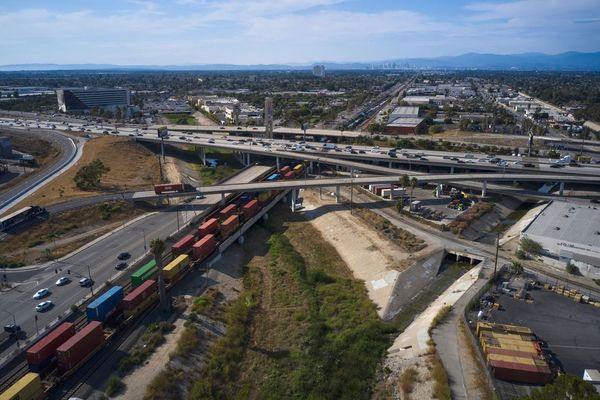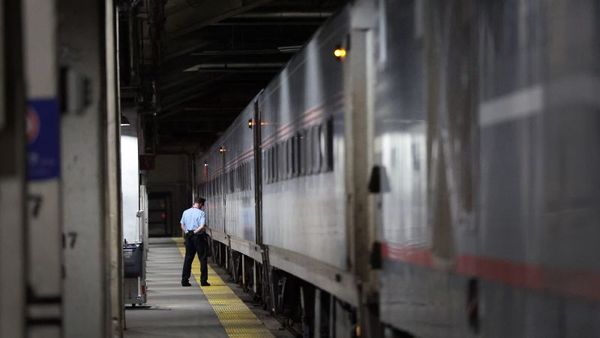
Passenger trains have long been a popular mode of transportation in many countries around the world. However, in the United States, the prevalence of passenger trains has not been as prominent. This raises the question: why doesn’t the US have more passenger trains?
The Rise of the Automobile
One of the key factors contributing to the decline of passenger trains in the US is the rise of the automobile. As cars became more affordable and accessible, people started to prefer the convenience and flexibility they offered. This led to a decrease in demand for train travel.
Focus on Air Travel
Another reason for the limited presence of passenger trains in the US is the focus on air travel. With the development of the aviation industry, flying became a popular choice for long-distance travel. Airports were built and airlines expanded their routes, making air travel a convenient option for many.
Lack of Investment
Unlike some other countries, the US has not made significant investments in passenger train infrastructure. The existing train networks are often limited and outdated, making train travel less attractive compared to other modes of transportation. Without adequate investment in infrastructure, it is challenging to expand and improve passenger train services.
Geographic Challenges
The vast size of the US and its diverse geography also present challenges for passenger train travel. Building and maintaining train tracks across long distances and diverse terrains can be costly and complex. This adds to the difficulties of expanding passenger train networks throughout the country.
Environmental Considerations
In recent years, there has been a growing awareness of the environmental impact of transportation. While passenger trains are generally considered a more sustainable option compared to cars and planes, the US has been slower to prioritize environmentally friendly modes of travel. However, there have been efforts to promote greener transportation options, including the expansion of passenger train services.
Conclusion
The limited presence of passenger trains in the US can be attributed to various factors, including the rise of automobiles, the focus on air travel, lack of investment in infrastructure, geographic challenges, and environmental considerations. While there are challenges to overcome, there is a growing recognition of the benefits of passenger trains, and efforts are being made to improve and expand train travel options in the US.
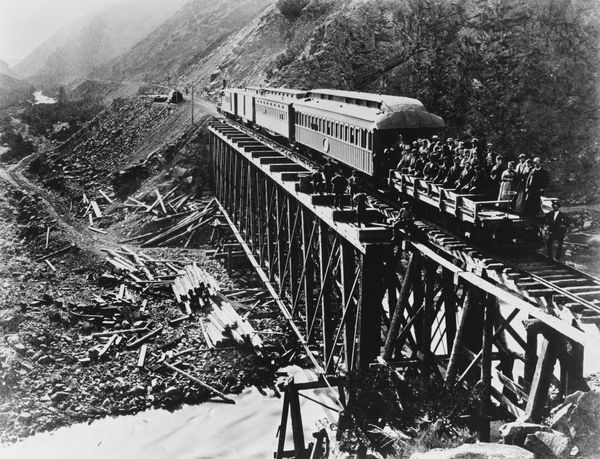
If your idea of train travel – fast, easy, ubiquitous, even glamorous – is from movies like “Before Sunrise” or “Bullet Train” set in Europe or Asia, you’ll be surprised to learn that the US was once the world’s superpower in passenger trains. With a busy transcontinental network of 254,000 miles of tracks at its height a little over a century ago, America moved on trains.
Today, the United States’ passenger rail system is an echo of its former self, with swathes of the network unused or surrendered to freight. Over the last century, the United States shifted its focus – and investments – away from passenger railroads and toward travel by cars and planes.
That may be starting to change. Efforts to revive railroad travel in the US have recently picked up steam amid a push to lower emissions: Earlier this month, the Biden administration announced that the federal government would pump $16 billion into improving the nation’s busiest rail line, Amtrak’s Northeast Corridor, which runs from Boston to Washington, D.C.
Brightline, the country’s only privately owned and operated intercity railroad, opened its completed train line between Orlando and Miami in September. Its roughly three-hour run shaves about an hour off of drive time. California has invested heavily in a route.
The time might be right for a railroad renaissance. The Swedish “flyskam” movement, which translates to “flight shame,” has grown worldwide among people seeking to diminish their carbon footprints. The transportation sector emits the highest amount of greenhouse gas of all US sectors – and the US Department of Transportation has said that rail could play an essential role in reducing emissions.
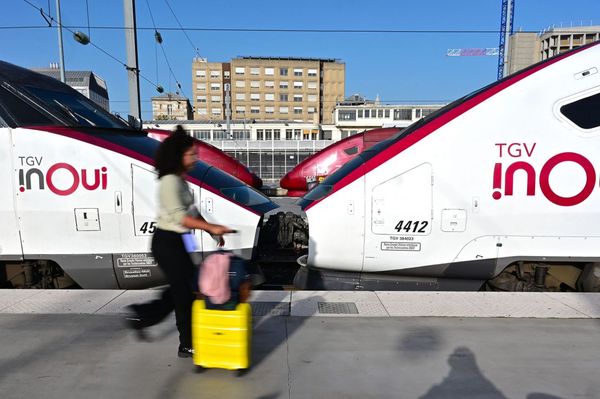
Train Travel Today: Amtrak and the Challenges Ahead
Traveling by train is not entirely out of fashion in the US. Today, Amtrak is the main provider of intercity rail travel; the government-owned system runs on more than 21,400 miles of track and operates in 46 states.
But the US has a long way to go, experts say, to catch up to countries like France, Japan and China when it comes to high-speed rail and wide-reaching train travel.
The Rise and Fall of US Trains
In the 19th century, trains revolutionized how people traveled, and the US led the way. Some of the nation’s greatest fortunes – those of JP Morgan, Jay Gould, Cornelius Vanderbilt, among others – were built on the rails. By the 1860s, private US companies, with the help of government cash and land grants, were constructing the country’s first transcontinental railroad. It connected the United States’ existing eastern rail network all the way to San Francisco.
In exchange for government subsidies, rail carriers were required to provide passenger service.
Today, much of the train tracks once used by passengers are now used exclusively by freight trains – and for many Americans, train travel isn’t even a consideration. So what happened?
While there is no single answer, Yonah Freemark, the Urban Institute’s lead on the fair housing, land use and transportation practice area, told CNN that one primary reason for passenger trains’ decline in popularity was that the nation diverted.
Freemark said the US government began encouraging states to invest in highways in the 1920s. Those efforts accelerated under President Dwight D. Eisenhower.
According to the website of the United States Senate, which provides a history of legislation, Eisenhower’s interest in the US highway system dated back to his participation in the Army’s first cross-country motor convoy in 1919. It gave him first-hand knowledge of the poor quality of America’s roads. In his State of the Union message in 1954, he proposed an American interstate highway system, which he justified as a national defense program. The highways could be used for transporting troops and for evacuating cities in case of nuclear attack.
While the government’s encouragement of highway travel wasn’t solely a US phenomenon, “the difference between the US and other countries is that the US essentially allowed the private passenger rail companies to slowly disappear into irrelevance,” said Freemark.
“We created an environment in which it was difficult for railways to compete with the car,” he added.
Paul Hammond, a historian and the executive director of the Colorado Railroad Museum, said poor timing played a factor as well. Railroad companies invested heavily in newer modern equipment after World War II just as the postwar baby boom and suburban living grew in popularity. Hammond said: “Railroads sunk a lot of money into modernizing the passenger network right at the wrong time.”
The Government Takes Over Amtrak
By the early 1970s, passenger rail service had become a drag on private companies’ bottom lines amid low ridership, deteriorating infrastructure and growing competition from cars and planes.
In 1970, President Richard Nixon signed the Rail Passenger Service Act, which removed the requirement that private rail companies provide passenger service. The US government created Amtrak.
While the organization is much smaller than similar government-owned agencies in many foreign countries, Amtrak serves more than 20 million passengers annually.
But many American towns and cities have lost access to passenger trains. Since 1971, some routes have been abandoned, primarily in midwestern states like Indiana and Ohio, according to route maps provided by the Bureau of Transportation Statistics.
Amtrak also has little control over scheduling delays and on-track maintenance, since more than 70% of the tracks it runs on are owned – and shared – with private freight companies.
Amtrak’s affordability poses an issue, as well, according to Freemark. “They charge prices that are much higher than you see in other countries with much better service,” he said.
However, some improvements are on the way. In early November, the Biden administration announced plans to improve Amtrak’s Northeast Corridor, the system’s most heavily used route.
Federal funds will go toward the safety of the trains, expanding capacity for more riders and replacing aging infrastructure – including a Baltimore rail tunnel that opened while Ulysses S. Grant was president.
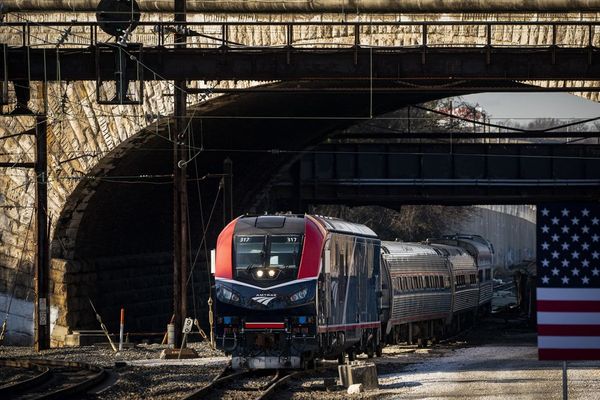
“I know how much it matters,” said President Joe Biden, who famously took Amtrak trips between Washington DC and his home in Delaware throughout his career in the Senate.
Though Amtrak’s Northeast Corridor introduced trains that could travel up to 150 mph in 2000, the organization is still far off from the high-speed trains seen in China and Japan that travel more than 200 mph. Most of the private companies that share tracks with Amtrak are hesitant to disrupt their operations to allow for updates, Freemark said.
A lack of political will has played a role, too. “The federal government’s commitment to investing in high-speed rail lines has been limited at best,” Freemark said.
Can Passenger Trains Make a Comeback?
It’s unlikely that train travel will recover the ground it lost. Since the age of railroad domination in the United States, the country has grown larger and more spread out. However, there is hope for a railroad renaissance. Efforts are being made to improve Amtrak and expand rail travel options.
With the recent investments and growing awareness of the need for sustainable travel options, the future of trains in the United States may be brighter than ever before. As the world continues to combat climate change, rail travel could play an essential role in reducing emissions and providing a reliable and efficient transportation option for all.


Train travel in the United States has seen a decline over the years. With the country becoming larger and more spread out, it’s unlikely that train travel will fully recover its former glory. However, there is still hope for a revitalization of the industry.
According to Robert Puentes, CEO of the Eno Center for Transportation, a nonprofit think tank, the key is to focus on building rail systems that connect major metropolitan areas with strong economic ties. Emulating Amtrak’s successful Northeast Corridor, these rail systems would fulfill a genuine need rather than relying on the “if you build it, they will come” mentality.
One prime example of a potentially successful high-speed rail connection is between Los Angeles and San Francisco. These two metropolitan areas have a strong economic connection, and many people travel between them regularly. Additionally, the distance is ideal for rail travel compared to aviation.
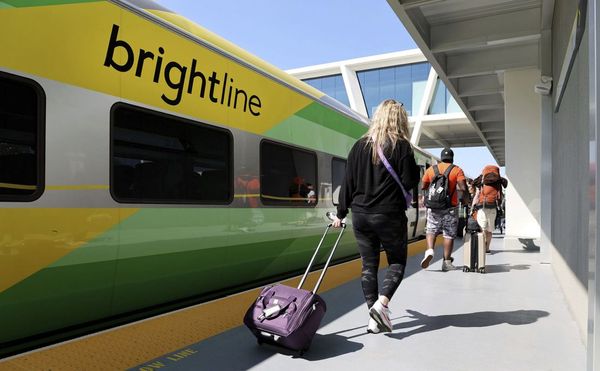
Unfortunately, the development of such rail systems, like the one in California, often takes longer than anticipated. However, private companies have also recognized the opportunity and are stepping in to fill the void. Brightline, for instance, has already welcomed millions of passengers on its South Florida trains and has plans to build another passenger railway between Los Angeles and Las Vegas.
Dreamstar Lines, a California-based company, is also working to restore the romance of train travel. They have announced plans to build a luxury overnight sleeper train that will run between Los Angeles and San Francisco.
Amtrak, on the other hand, is looking to update its existing sleeper cars. These cars have been in service since 1979, and the company believes in the future of their long-distance service. They are committed to enhancing the customer experience across their network.
One of the challenges in promoting train travel is changing the mindset of Americans who have become accustomed to driving cars. Train travel is not as common in the US as it is in other parts of the world. However, with the right investments, improvements, and marketing efforts, it is possible to reshape the perception of train travel and make it a viable and appealing option for everyone.
In conclusion, while train travel may have lost some ground, there are opportunities to transform and revitalize the industry. By focusing on connecting major metropolitan areas, improving infrastructure, and enhancing the overall customer experience, we can create a future where train travel is not only convenient but also enjoyable for people of all ages.
Note: The images used in this article are for illustrative purposes only and do not represent actual train services.
